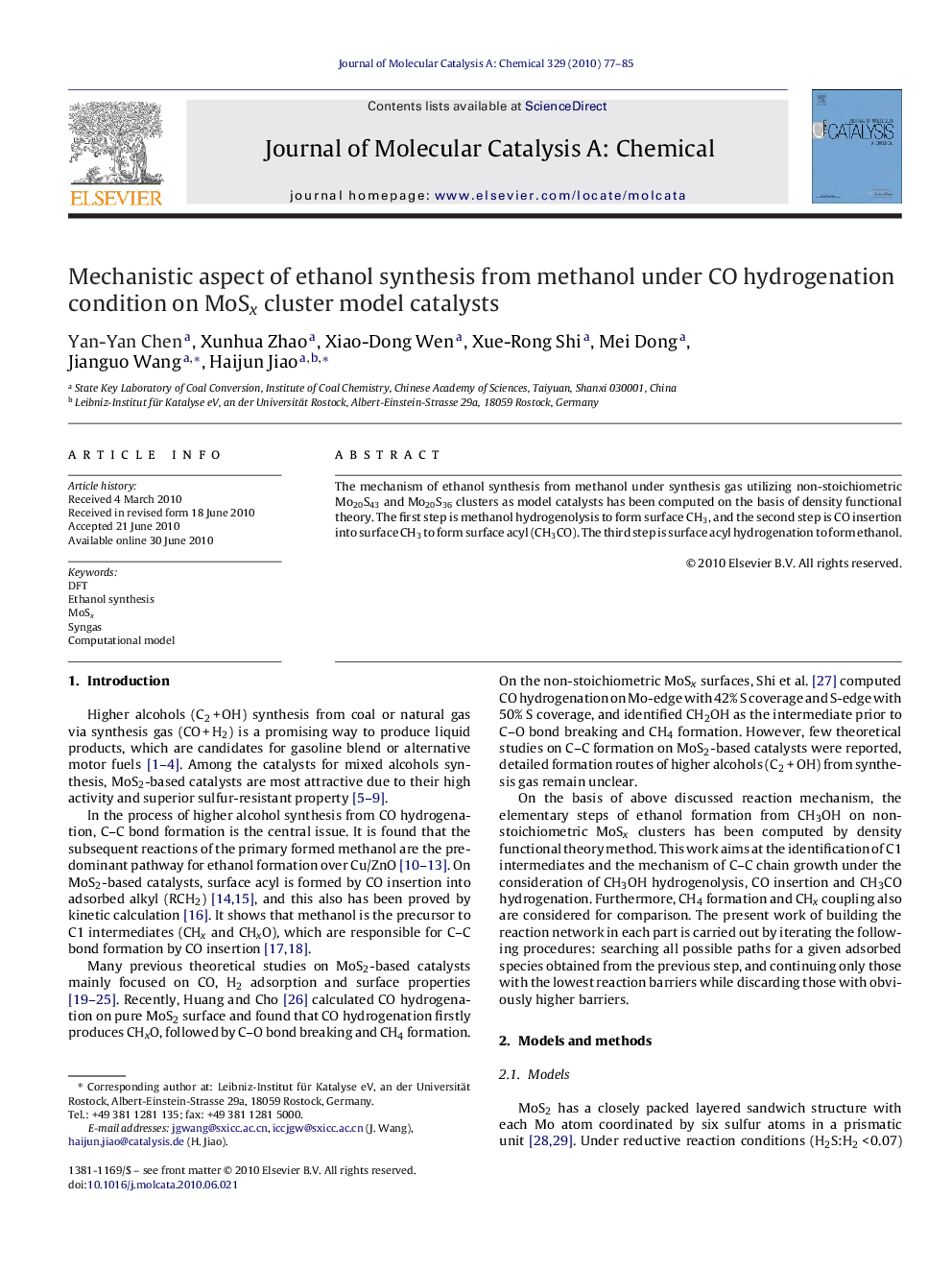| Article ID | Journal | Published Year | Pages | File Type |
|---|---|---|---|---|
| 66697 | Journal of Molecular Catalysis A: Chemical | 2010 | 9 Pages |
Abstract
The mechanism of ethanol synthesis from methanol under synthesis gas utilizing non-stoichiometric Mo20S43 and Mo20S36 clusters as model catalysts has been computed on the basis of density functional theory. The first step is methanol hydrogenolysis to form surface CH3, and the second step is CO insertion into surface CH3 to form surface acyl (CH3CO). The third step is surface acyl hydrogenation to form ethanol.
Graphical abstractOn Mo20S43 and Mo20S36 model catalysts, CH4 formation from methanol with synthesis gas is much more favorable kinetically and thermodynamically than ethanol formation, deduced from DFT computations.Figure optionsDownload full-size imageDownload high-quality image (26 K)Download as PowerPoint slide
Related Topics
Physical Sciences and Engineering
Chemical Engineering
Catalysis
Authors
Yan-Yan Chen, Xunhua Zhao, Xiao-Dong Wen, Xue-Rong Shi, Mei Dong, Jianguo Wang, Haijun Jiao,
